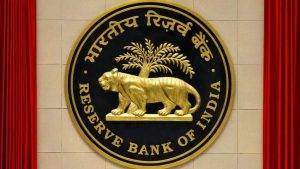RBI Annual Report 2024-25:

The Reserve Bank of India (RBI) released its Annual Report 2024-25, providing a comprehensive overview of the country’s monetary policy, financial stability, regulatory initiatives, and key economic developments.
RBI Annual Report 2024-25:
- Global growth slowed to 3.3% in 2024, below the historical average of 3.7% (2000-19). Growth in 2025 expected at 2.8% and 3.0% in 2026 amid geopolitical tensions, trade protectionism, and elevated public debt.
- Global inflation moderated to 5.7% in 2024 from 6.6% in 2023, but services inflation remained sticky in major advanced economies.
- India’s Gross Domestic Product (GDP) growth moderated to 6.5% in 2024-25, yet it remained the fastest-growing major economy globally.
- Agricultural Gross Value Added (GVA) grew by 4.6% (up from 2.7% in previous year), driven by record foodgrain production and favourable weather.
- Industrial sector growth slowed to 4.3% and the services sector remained strong with a 7.5% growth and accounted for 64.1% of GVA.
- As of March, 2025, the RBI’s balance sheet grew by 8.2% year-on-year.
- Its income rose by 22.77% (driven by a ~33% surge in forex transaction gains and higher returns from investments), while expenditure increased by 7.76%.
- This led to a record surplus of Rs 2.68 lakh crore, up 27.37% from Rs 2.11 lakh crore in the previous year.
- On the assets side, gold rose by 52.09%, domestic investments by 14.32%, and foreign investments by 1.70%.
- Liabilities expanded due to higher notes issued, revaluation accounts, and other liabilities.
- As of March, 2025, foreign assets (including gold and loans) made up 74.27% of total assets, with domestic assets at 25.73%. Gold holdings rose by 57.48 metric tonnes to 879.58 metric tonnes.
- Headline inflation moderated to 4.6% in 2024-25 from 5.4% in 2023-24.
- Core inflation stood at 3.5%, with food inflation falling to 2.9% by March 2025.
- Fuel prices saw deflation of 2.5% due to softer global energy prices.
- The Monetary Policy Committee (MPC) maintained the repo rate at 6.50% through much of 2024-25 but shifted the stance from “withdrawal of accommodation” to “neutral” in October 2024.
- The cash reserve ratio (CRR) was reduced to 4% in December 2024 to ease liquidity pressures.
- Merchandise exports grew marginally by 0.1%, while imports rose by 6.2%, widening the trade deficit to USD 282.8 billion.
- Current Account Deficit (CAD) remained manageable at 1.3% of GDP. Foreign exchange reserves stood at USD 668.3 billion, covering 11 months of merchandise imports.
- Net household savings increased to 5.1% of Gross National Disposable Income (GNDI) (measures the income available to the nation for final consumption and gross saving) in FY24.
- Bank credit growth outpaced deposit growth, improving credit-to-deposit ratio slightly.
- Gross Non-Performing Assets (NPA) ratio and Net NPA ratio declined further. Urban Cooperative Banks (UCBs) showed improved credit growth and lower GNPA ratios.
- Digital payments volume grew by 34.8%, value by 17.9% in 2024-25.
- Unified Payments Interface (UPI) accounted for 48.5% of global real-time payments by volume.
- The RBI’s Financial Inclusion Index rose from 60.1 in 2023 to 64.2 in 2024, reflecting deeper usage of financial services.
- RBI introduced ‘bank.in’ domain to enhance digital banking security, and expanded the Central Bank Digital Currency (CBDC) pilot to 17 banks and 60 lakh users.
- RBI launched the FinTech Repository and EmTech Repository to track tech adoption by FinTechs and regulated entities. Managed by RBI Innovation Hub, these platforms capture data on technologies like Machine Learning and Artificial Intelligence, aiding policy and industry insights.
- Gross Fiscal Deficit (GFD) of the central government reduced to 4.7% of GDP in 2024-25 from 5.5% in 2023-24.
- Capital expenditure grew by 5.2%; revenue expenditure grew by 5.8%. States’ consolidated fiscal deficit is likely to remain within 3.2% of GDP.
- India projected to sustain GDP growth at 6.5% with risks balanced.
- Inflation expected at 4.0%, with easing supply pressures but upward risks from global uncertainties.
- The central government aims to reduce the fiscal deficit to 4.4% of GDP in 2025-26 and target a declining public debt-to-GDP ratio reaching 50% by 2031.




